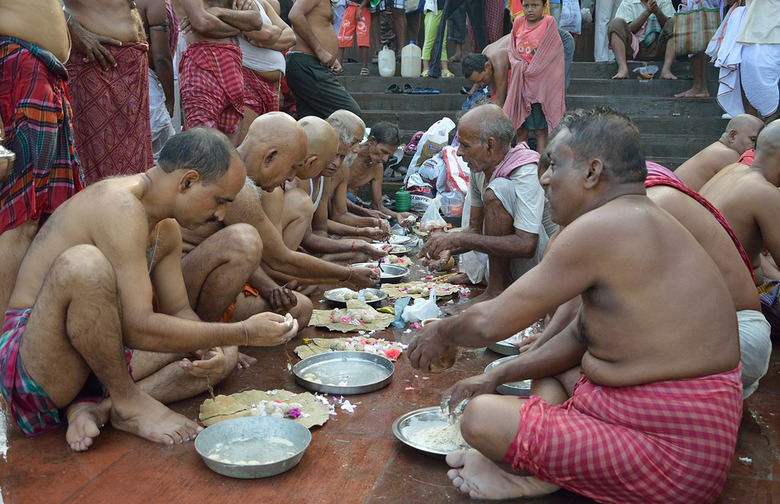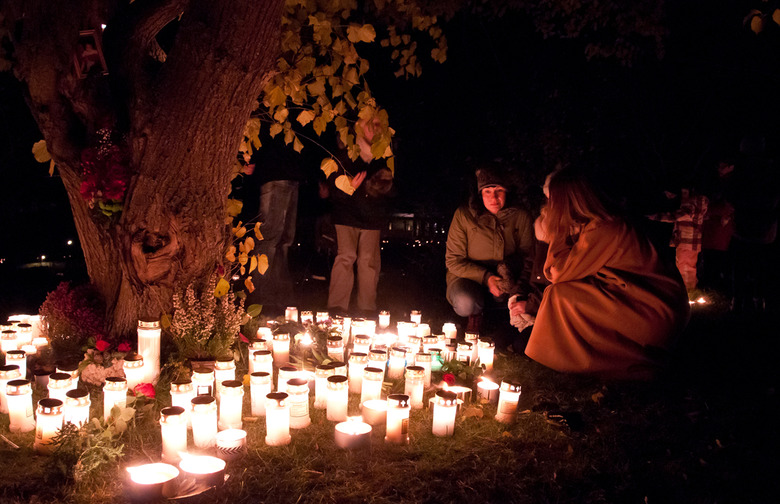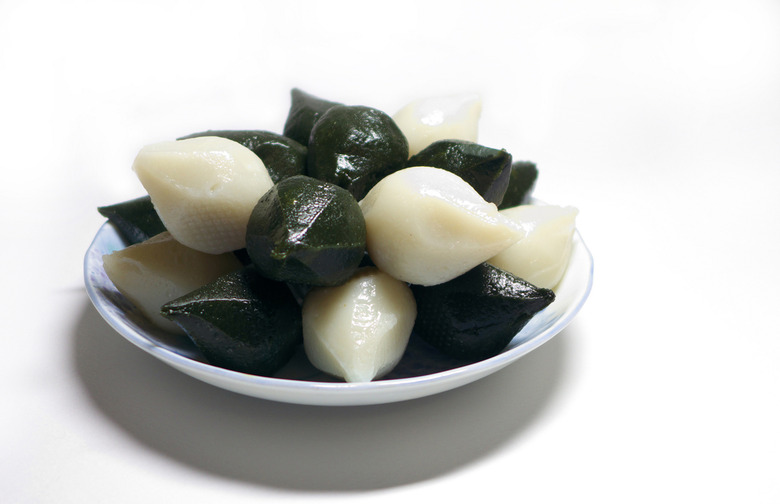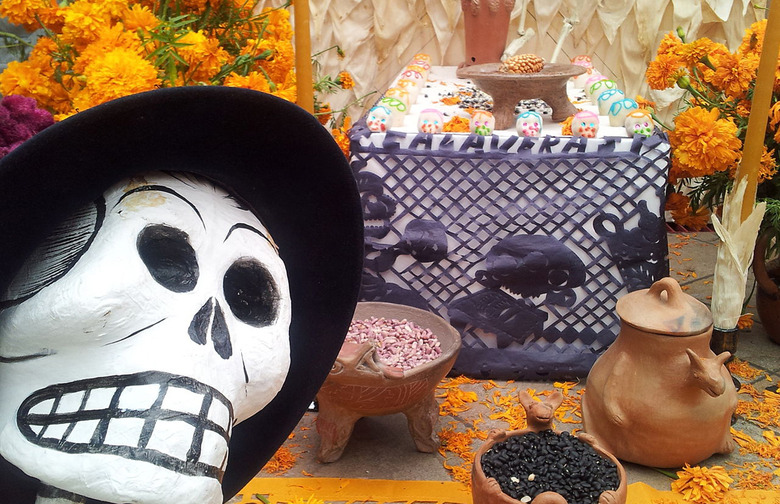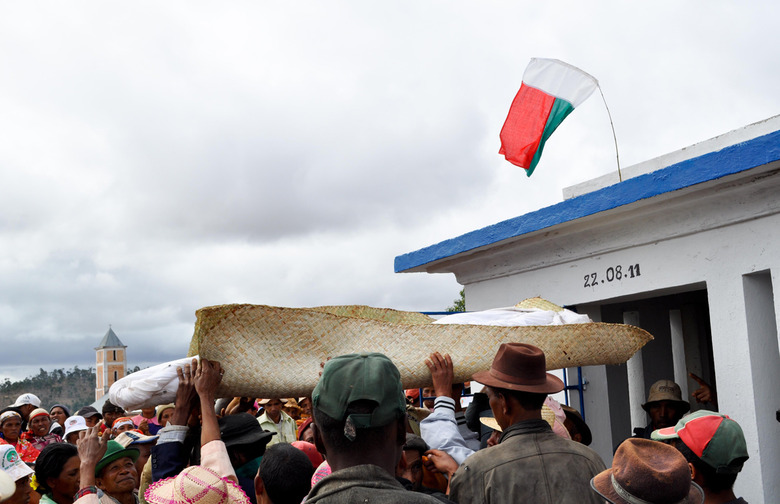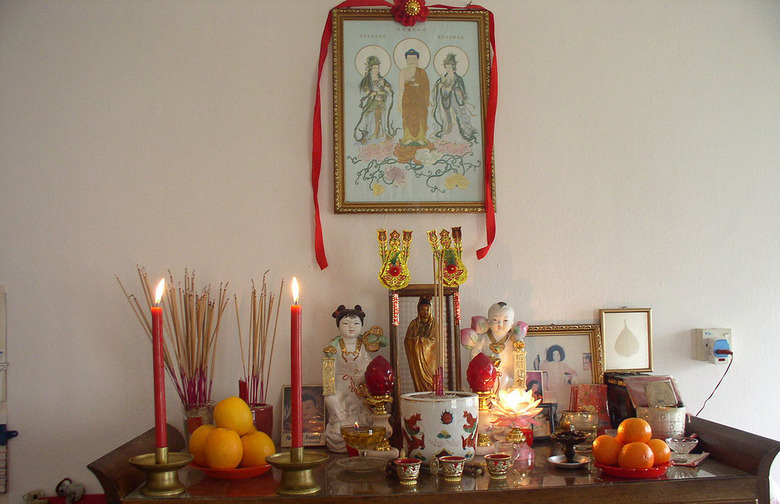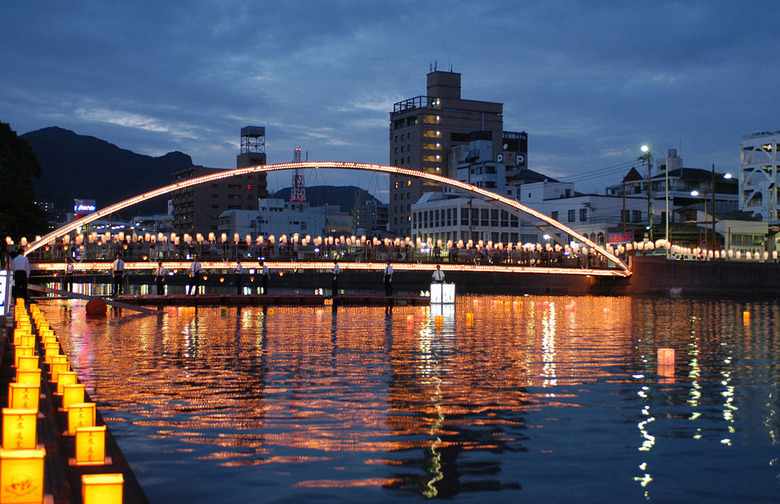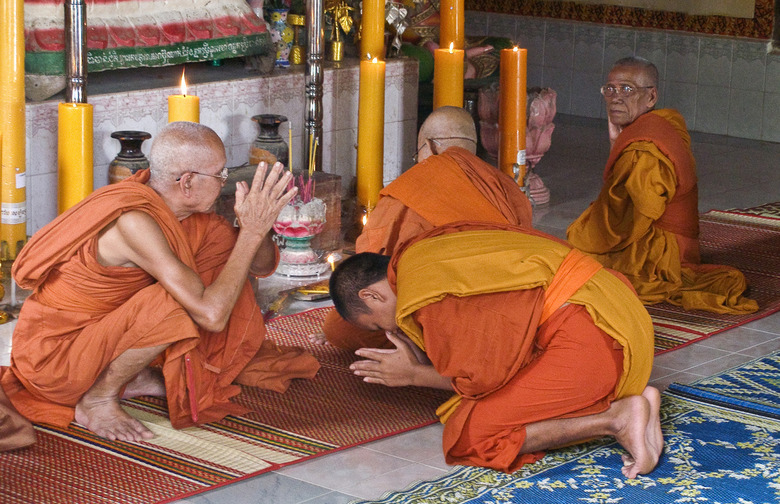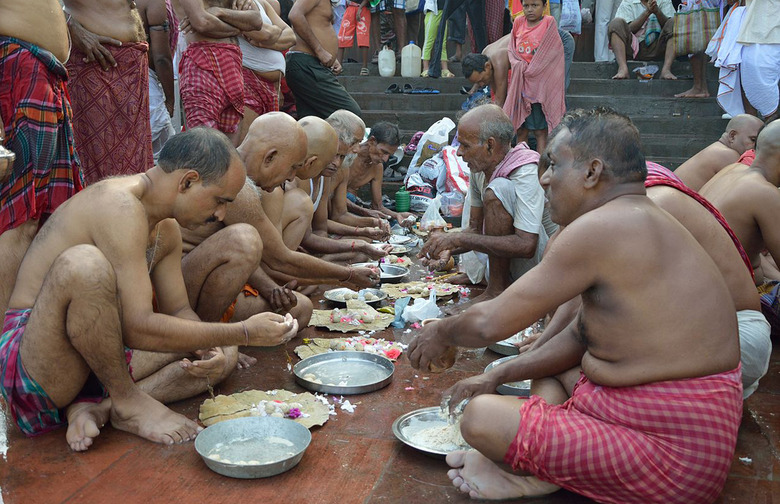Día De Los Muertos And 8 Other Festivals Of The Dead Around The World Slideshow
Halloween in America means cleverly carved jack-o'-lanterns on front steps (and on Instagram), costumes inspired by the latest pop culture craze, crews of children in elaborate costumes running from door to door with bags of goodies, and motion-sensing decorations that scream or cackle whenever someone unwittingly comes near. But it wasn't always this way. Halloween most likely evolved from the ancient Celtic festival Samhain, in which people dressed in costumes and lit bonfires to keep the spirits at bay. Christians did a good job of appropriating pre-Christian holidays and rituals, and after Pope Gregory III declared November 1 All Saints' Day in the eighth century, the evening before became known as All Hallows' Eve. That grew into Halloween.
Despite all the talk of ghosts and spirits on October 31, most Americans would sooner spend the holiday dressing up and retelling ghost stories than remembering loved ones who have passed on. In many other parts of the world, however, festivals of the dead are centered around deceased family members, and families focus on extensive preparations for the return of the spirits of their ancestors.
In honor of Halloween, read on to learn about nine festivals around the world that honor the dead.
All Saints’ Day and All Souls’ Day
All Saints' Day and All Souls' Day are Catholic holidays celebrated on the first and second day after Halloween, respectively. The two holidays are popular in parts of Germany and other countries with Catholic histories. Honoring unknown martyrs and saints is the purpose of All Saints' Day, while All Souls' Day usually consists of attending church services and honoring deceased family members by visiting their graves. The latter day's purpose is to honor and pray for souls in Purgatory.
Chuseok
This three-day Korean holiday and festival is meant to thank ancestors for a prolific harvest. It's held on the 15th day of the eighth month of the lunar calendar; this year, it started in late September. The festival features celebration, dancing, memorial services, and paying respects to dead relatives and cleaning their tombs. Another custom is preparing a songpyeon, or special rice cake, which is traditionally left out for ancestors who have passed on.
Día de los Muertos
This name of this three-day Latin American festival, which begins on October 31, is Spanish for Day of the Dead. Families invite beloved relatives who have passed away to return home for a visit, and altars are prepared in the home with photos, decorations, and the deceased person's favorite foods and drinks. Flowers on the altar symbolize life's brevity. Candles are also lit to help the dead find their way home. Elaborately artistic skulls and skeletons, usually depicting the deceased in some kind of professional garb (musician, cook, fireman, priest), made out of everything from marzipan to hammered tin, are everywhere.
Famadihana
During winter in the highlands of Madagascar, people join in exhumation ceremonies called Famadihana. The Malagasy believe that spirits can't complete the journey to the land of their ancestors until their bodies are entirely decomposed. Every seven years, families gather at the clan's tomb, and ancestors in burial cloths are passed around as people dance. Next, the body is affectionately rewrapped in special scarves. Families take photos with the deceased or sit with them and think before returning them to their resting place for another seven years – unless there is a time of crisis, in which the ceremony is repeated. The ritual continues to occur until the body has decomposed.
Gai Jatra
This eight-day Nepalese festival, celebrated in August and September, is also known as the Festival of the Cows. Cows are highly revered by many Hindu sects and thought to aid in a deceased person's journey to the afterlife. If a family has lost a beloved relative in the past year, they will lead a cow through town. If no cow is available, a child dressed as a cow is sufficient for the tradition. Kathmandu is a good city in which to witness the festival, as it is mainly celebrated by the Newar community of the Kathmandu valley.
Hungry Ghost Festival
Buddhist and Tao customs call for a month in which to honor ancestors, and the resultant Hungry Ghost Festival is usually celebrated in the summer in China, Japan, Vietnam, Taiwan, Malaysia, Indonesia, and Singapore. In China, the seventh month of the Chinese lunisolar calendar is regarded as the Ghost Month. The Ghost Festival itself is held on the 15th night of this month (or the 14th, as is the case in the southern part of the country.) On the day of the festival, the line between the world of the living and the dead is said to be most blurred, allowing spirits to pass freely from the lower realm into the land of the living. Families feed hungry spirits with food on altars and make paper offerings to them (paper money, watches, even full-size cars, and more) by burning them in a metal bin. After the festival, people often light flower-shaped water lanterns and float them on the rivers to guide spirits back to the world of the dead.
Obon Festival
Each summer in Japan, spirits are believed to return to visit their relatives. The exact date of the resulting celebration, the Bon or Obon Festival, depends on the region, as different Japanese regions adapted differently to the change from lunar calendar to Gregorian calendar in the late 19th century. In eastern Japan, Shichigatsu Bon, or Obon in July, is celebrated around July 15th in accordance with the solar calendar. Kyu Bon, or Old Obon, differs in timing every year as it is celebrated on the 15th day of the seventh month of the lunar calendar in parts of southern Japan. The most commonly celebrated Obon is Hachigatsu Bon, or Obon in August, celebrated around August 15th in accordance with the lunar calendar. Regardless of start date, the celebrations last for three days. Buddhists hang lit paper lanterns in front of their homes to guide their ancestors' spirits and prepare altars with special food for them. In Kyoto, the dead are often welcomed through the bon-odori, a traditional dance, and huge bonfires at the perimeter of the city presumably guide spirits back to the land of the dead. People usually return home to spend this holiday amongst their loved ones.
Pchum Ben
This 15-day religious holiday is celebrated throughout Cambodia. Sprits of deceased relatives are thought to come in search of their living loved ones to atone for sins they committed during their lifetimes. Cambodians bring food to pagodas, where Buddhist monks then offer it to the souls of the dead.
Pitru Paksha
Pitru Paksha is another Hindu festival celebrated in India, a 16-day celebration held sometime between September and October. Priests participate in daily rituals and families make food offerings to the deceased, which are said to result in blessings of salvation, health, and wealth from ancestors, as well as salvation for the ancestors themselves. If you don't have the time or funds for last-minute travel to one of these festivals this year, that's alright. Check out these eight winter ice festivals that you can try to grab a ticket to next season.
